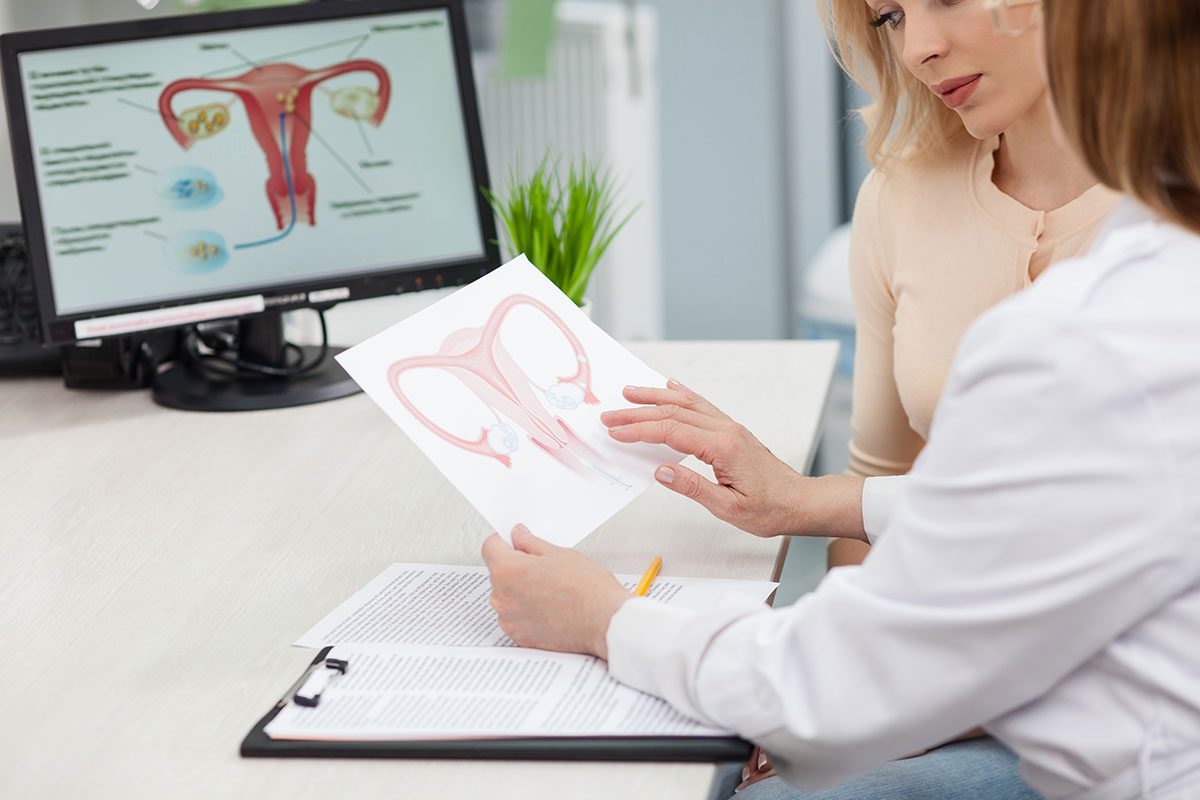When to get a hysterosalpingogram
An HSG test is a common part of an initial fertility evaluation. HSG stands for hysterosalpingogram, and refers to a procedure that examines the uterus and fallopian tubes to identify any potential issues.
What Does an HSG Test Examine?
Pregnancy happens when a sperm meets and fertilizes an egg in the fallopian tube, which then implants in the uterus. This might not happen if the fallopian tubes have any blockages, or if the uterine lining has features that make it harder for the egg to implant. For instance, polyps, scarring, and fibroids can all affect the uterine lining.
In an HSG test, a doctor uses a thin tube through the vagina and cervix to fill the uterus and fallopian tubes with a liquid dye. The doctor takes a series of X-rays as the dye moves through the reproductive system. This shows the general shape of the uterus and fallopian tubes and assess if the liquid can move freely through the tubes.
When Do I Need an HSG Test?
Initial fertility evaluations often include an HSG test. This procedure can help diagnose or rule out common causes of infertility. Patients typically receive an HSG during the first half of their menstrual cycle.
HSG testing can also assess the fallopian tubes after a tubal ligation (“tying your tubes”). It shows if the procedure successfully and completely blocked the tubes.
What Happens During the HSG Process?
Talk with your fertility specialist about how your clinic performs HSG testing. Some providers may prescribe an antibiotic before the procedure or recommend taking an over the counter pain medication beforehand. You should always check with your fertility team before using any medications.
The HSG procedure is relatively quick and takes place in the fertility clinic. You lie on an exam table as if you were receiving a pelvic exam, with an X-ray machine nearby. The doctor uses a speculum (the tool used during a Pap smear) to open the vaginal canal and reach the cervix. Next, they insert a very thin plastic tube through the cervix into your uterus. Once the tube is in place, the doctor adds a special fluid through the tube and starts taking images with the X-ray machine. You may be asked to switch positions on the exam table to get better images of the fluid moving through your body. If the fallopian tubes are clear, the fluid passes through the ovaries into the abdomen, where it safely absorbs into the body. Once the doctor has taken enough images, they remove the tube, finishing the procedure.

Are There Side Effects With HSG Testing?
Patients often feel mild discomfort or cramping during or after an HSG test. This discomfort is usually mild to moderate and should only last up to a few hours after the test. Over the counter anti-inflammatories such as ibuprofen or naproxen can help with pain. Some patients may feel mild nausea or dizziness, which should stop within a day or two.
Patients also often experience an increase in vaginal discharge after the procedure. This is caused by some of the extra fluid from the test draining out. An increase in sticky discharge, possibly with small amounts of blood, is completely normal and to be expected. You can use a menstrual pad to catch the flow. However, do not use tampons for at least a few days after the procedure. Ask your doctor when you can use tampons again.
Severe side effects from HSG are rare. If you experience any fever, chills, fainting, vomiting, heavy vaginal bleeding, severe cramps, or foul-smelling vaginal discharge, call your doctor.
Schedule Your Initial Fertility Testing Today
The HSG test is just one part of getting a complete picture of your reproductive health. At PNWF, we use your initial fertility assessment to create a fully personalized fertility treatment plan for your goals. To get started, schedule your first consultation with us today.
Additional reading: www.acog.org


